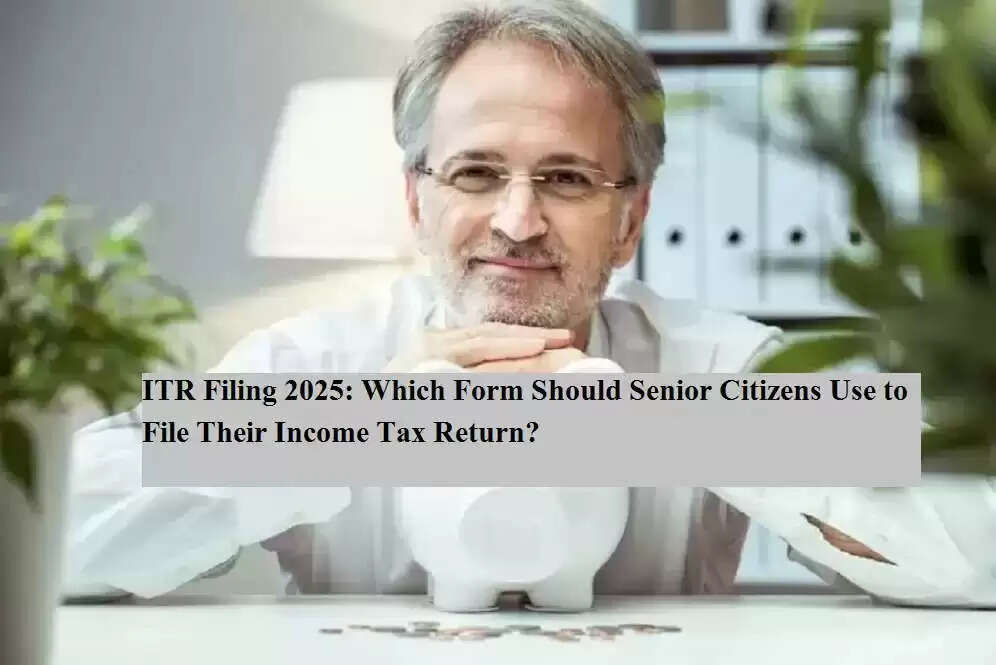Essential Guide for Senior Citizens on Income Tax Returns for FY 2024-25
Understanding Income Tax Returns for Senior Citizens

As the deadline for submitting Income Tax Returns (ITR) for the Financial Year 2024-25 draws near, it is crucial for senior citizens and super senior citizens to identify the appropriate ITR form applicable to them. The Income Tax Department provides various ITR forms based on the taxpayer's age, type of income, and its source.
👴 Defining Senior and Super Senior Citizens
-
Senior Citizen: Individuals aged 60 years and above
-
Super Senior Citizen: Individuals aged 80 years and above
🛑 Filing Exemptions Under Section 194P
According to Section 194P of the Income Tax Act, 1961, senior citizens aged 75 years or older may be exempt from filing ITR if they meet the following criteria:
-
Must be 75 years or older during the financial year.
-
Income should solely come from pension and interest (interest must be from the same bank where the pension is deposited).
-
A declaration must be submitted to the bank.
-
The bank must deduct TDS on behalf of the senior citizen under Section 194P.
✅ If all conditions are satisfied, there is no requirement to file ITR.
❌ If any condition is not met, the senior citizen must file ITR either manually or online, depending on their income situation.
📄 ITR Forms for Senior Citizens in FY 2024-25
Senior citizens typically use four ITR forms based on their income type and amount:
✅ 1. ITR-1 (Sahaj) – For Individuals
Applicable if:
-
Total income ≤ ₹50 lakh
-
Income includes:
-
Pension or Salary
-
One house property
-
Other sources (interest, family pension, dividends)
-
Agricultural income ≤ ₹5000
-
Not applicable if:
-
Director in a company
-
Owns unlisted equity shares
-
Possesses foreign assets or signing authority in overseas accounts
-
Receives income from outside India
-
Subject to TDS under section 194N or deferred ESOP tax
-
Has business or professional income
✅ 2. ITR-2 – For Individuals and HUFs
Applicable if:
-
Income does NOT include business or professional income
-
Individuals/HUFs who are not eligible to file ITR-1
✅ 3. ITR-3 – For Business/Professional Income
Applicable if:
-
Individual or HUF earns income from business or profession
-
Not eligible to file ITR-1, ITR-2, or ITR-4
✅ 4. ITR-4 (Sugam) – For Presumptive Income
Applicable if:
-
Total income ≤ ₹50 lakh
-
Resident individual or HUF
-
Income from:
-
Pension/Salary
-
One house property
-
Other sources (interest, dividends, etc.)
-
Presumptive business or profession under sections 44AD/44ADA/44AE
-
Agricultural income ≤ ₹5000
-
Not applicable if:
-
Director in a company
-
Owns unlisted equity shares
-
Possesses foreign income or assets
-
Deferred tax on ESOPs
-
Income exceeds ₹50 lakh
⚠️ Note: ITR-4 is optional, not mandatory, even if conditions are met.
✅ Which ITR Form is Best for Most Senior Citizens?
| Income Type | Recommended Form |
|---|---|
| Only Pension & Interest (≤ ₹50 lakh) | ITR-1 (Sahaj) |
| Pension + Capital Gains or More Complex Sources | ITR-2 |
| Business/Profession Income | ITR-3 or ITR-4 (if under presumptive scheme) |
| Presumptive Business Income + Pension | ITR-4 (Sugam) |
📌 Final Recommendations for Senior Citizens
-
Verify if you qualify for exemption under Section 194P.
-
Gather all necessary documents such as Form 16, pension slips, interest certificates, and Form 26AS.
-
Consider e-filing for quicker processing and refunds.
-
Consult a CA or Tax Return Preparer (TRP) if you are uncertain about the correct ITR form.
